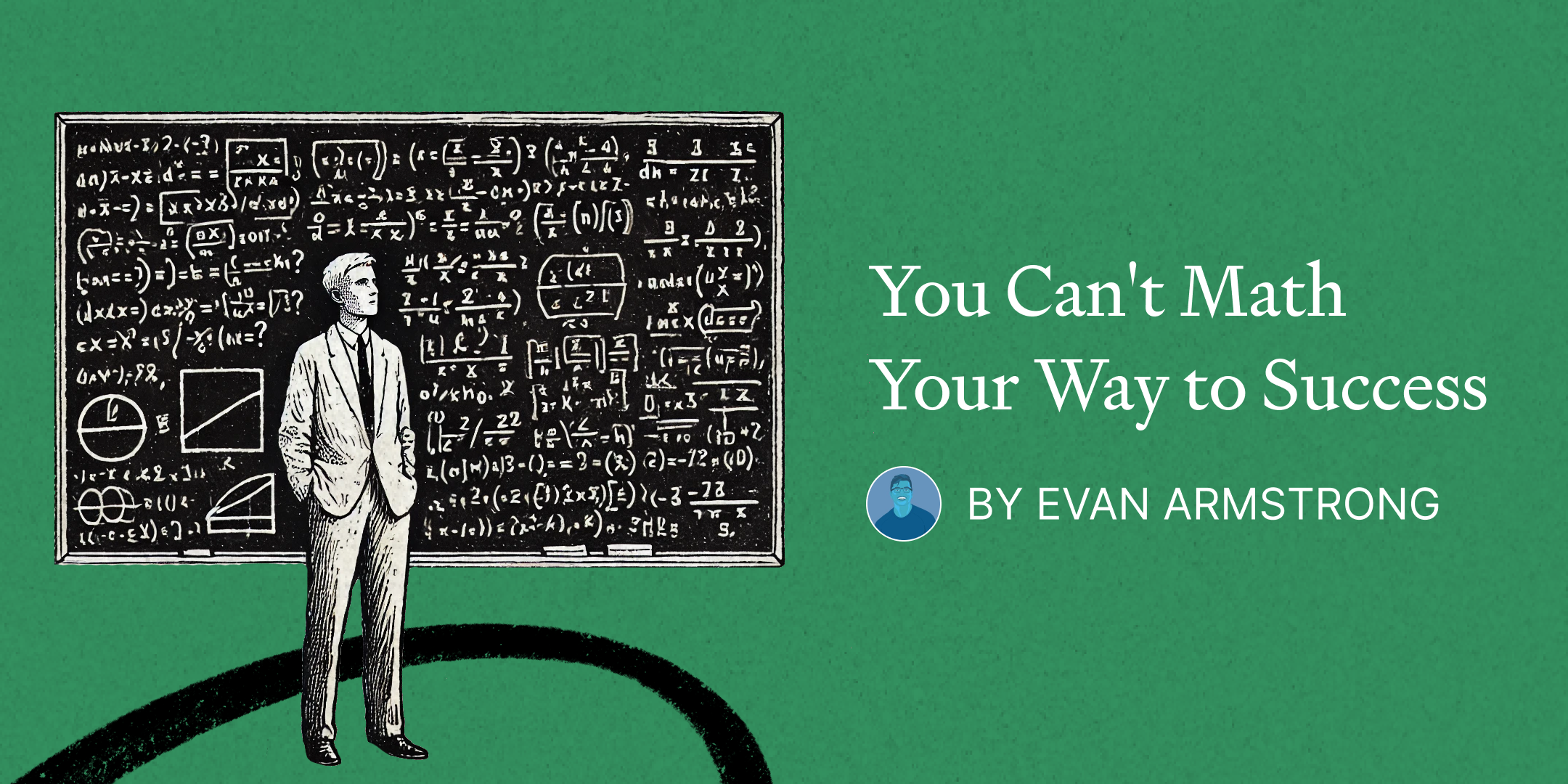You Can’t Math Your Way to Success

🌈 Abstract
The article discusses the author's experience and thoughts on raising a child, drawing insights from the creative process of artists as described in the book "The Work of Art" by Adam Moss. The key themes explored are:
- The author's data-driven approach to preparing for fatherhood and his desire to give his child the best possible life
- Insights from the creative process of various artists, highlighting the mysterious and intuitive nature of creating great art
- The author's belief that the key to success, whether in art, business, or life, is self-awareness and the ability to adapt to changing circumstances
🙋 Q&A
[01] The author's approach to preparing for fatherhood
1. What is the author's data-driven approach to preparing for fatherhood?
- The author has created a detailed spreadsheet with data on topics like graduation rates, career tracks, and high school placement rates to MIT, in an attempt to give his child the best possible life.
- The author sees this as an "endearing and only slightly deranged attempt" to help his daughter have the best life.
2. What is the author's motivation behind this data-driven approach?
- The author wants to give his daughter a happy life, as he himself took a long time to find personal peace after "stumbling and suffering, of surviving cancer, of learning to let go of the grind."
- The author hopes that his "unhelpful math" is a way to help his daughter have the best possible life.
[02] Insights from the creative process of artists
1. What are the key insights the author derives from the book "The Work of Art" by Adam Moss?
- The creative process of artists is diverse, with no uniform background or work habits. Some artists put in 12-hour days, while others work for just 3-4 hours.
- The only universal quality is the emotional states that accompany the creative process, such as trusting one's inner muse and instincts.
- The author finds the "mysterious part" of the creative process, which the artists themselves cannot describe, to be the most intriguing.
2. How does the author relate the insights from the creative process to his own life and the task of raising a child?
- The author sees life itself as the "hole in the doughnut" - the awkward middle where all advice applies and none of it does.
- He believes that making a great life, product, or childhood is an unknowable process, and the only universal quality is being in touch with one's state of creative being.
[03] The author's belief about the key to success
1. What is the author's view on the key to success, whether in art, business, or life?
- The author believes that the key to success is self-awareness and the ability to adapt to changing circumstances.
- He has found that there is no single, universal path to success, as evidenced by the diverse paths taken by successful startups and individuals.
- The author concludes that the only satisfying advice is to "pay attention to your circumstances, work hard, establish the right culture, and manage your emotions."
2. How does the author apply this belief to the task of raising his child?
- The author believes that his future child may turn out to be a "tomboy, a princess-loving girl, an artist, or a math geek," and the key is for him to be present and energetic enough to notice changes in his child and adjust his parenting accordingly.
- The author sees self-awareness as the key to successful parenting, as it will allow him to support his child with different techniques and experiences based on their unique needs and personality.
Shared by Daniel Chen ·
© 2024 NewMotor Inc.